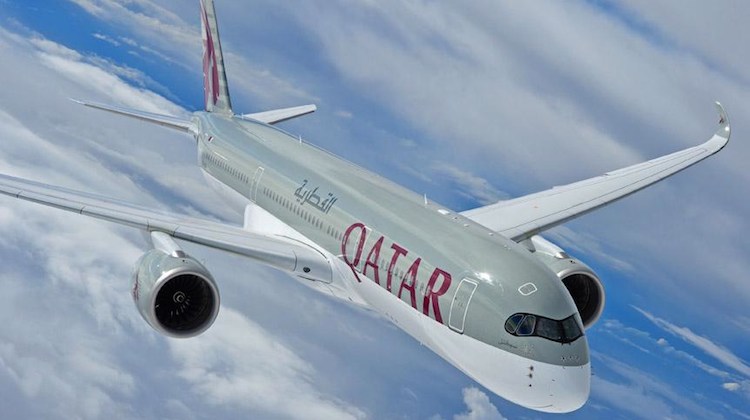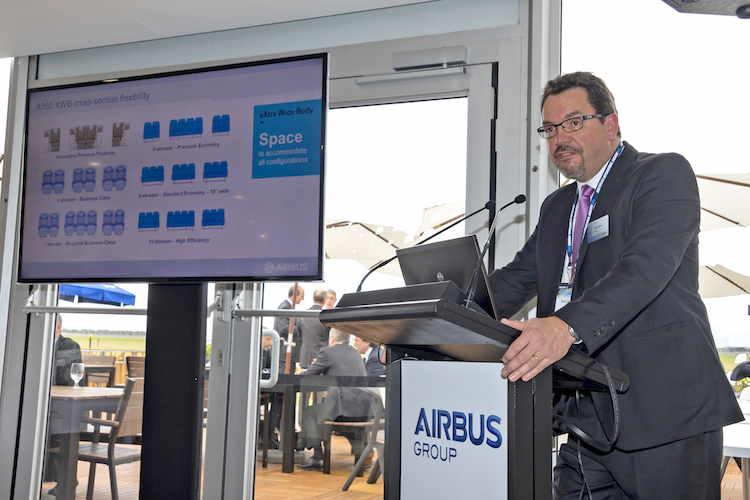 Airbus says its A350-900 can fly virtually unrestricted from any two cities in the world with 370-minute extended twin-engine operation approval (ETOPS) – so it’s no longer seeking the 420-minute ETOPS for which it originally applied.
Airbus says its A350-900 can fly virtually unrestricted from any two cities in the world with 370-minute extended twin-engine operation approval (ETOPS) – so it’s no longer seeking the 420-minute ETOPS for which it originally applied.
When the European Aviation Safety Agency certified the A350-900 on September 30 2014, it allowed the aircraft to fly up to six hours and 10 minutes away from a potential diversion airport in the event of a single engine failure.
It was the first aircraft to receive ETOPS approval for more than 180 minutes at the time of certification.
Airbus A350 marketing director Mike Bausor says the manufacturer is no longer seeking the 420-minute ETOPS with the US Federal Aviation Administration (FAA) during the certification phase: “We don’t need 420 minutes. There is nowhere we can’t go with 370 minutes,” Bausor said at the Avalon Airshow on Wednesday.
“When we filed with the FAA originally, we filed for 420 minutes. It turns out that was right at the beginning when we first designed the aircraft and now with 370 minutes we don’t need to go any further.”
In an Australian context, ETOPS restrictions are particularly relevant on routes across the southern oceans, such as Australia to South America and Australia to South Africa. Qantas flies a four-engine Boeing 747-400 to Johannesburg and Santiago from its Sydney hub.
Meanwhile, the Flying Kangaroo’s Oneworld Alliance partner LAN uses a four-engine Airbus A340-300 on its daily Santiago to Sydney service, which makes a technical stop in Auckland on both directions.
Bausor says: “By having 370 minutes you have actually eliminated any ETOPS constraints on routing. You can fly anywhere in the world except for overflying Antarctica,which is no-fly zone.”
LAN is due to switch to a Boeing 787 Dreamliner on the route from late April.
And Qatar Airways took delivery of its first A350 on December 22 2014.
The first commercial flight took place on January 15 2015, when Qatar flew the aircraft from its Doha hub to Frankfurt.
Bausor adds that Qatar is due to take the first seven A350 aircraft to be delivered, with Vietnam Airlines expected to receive its first A350 sometime in the middle of 2015.
Helsinki-based Finnair is the third airline due to take the A350 into commercial service before the end of 2015.
He explains: “The second customer is not the second aeroplane to be delivered. There is a whole batch of aircraft being delivered to Qatar Airways before Vietnam get their first one.
“The thing about Qatar is that it’s a very demanding customer. If we can deliver to Qatar then I think it’s really reflects on how mature the aeroplane is.”
The A350 program has had 780 orders from 40 customers since the program was launched in December 2006.
Bausor says Airbus plans to deliver 15 A350s in 2015 with production rates to rise to 10 a month by 2018.
With the A350-900 already in service, he says attention will turn to the development of the stretched A350-1000. Final assembly on the first A350-1000 is due to begin at the start of 2016, with entry-into-service in mid-2017.
Meanwhile, the 97,000lb thrust Trent XWB engines are expected to be run on Airbus’s A380 flying test bed in October.
While one-third of all A350 orders have been placed by carriers in the Asia-Pacific, an airline in Oceania is not among them. But Bausor expects the A350 to be a regular feature over Australian skies.
He stresses: “The A350 has been built, it is a long-range aeroplane and if there is one destination which is the long-range destination it has got to be Australia. In another three or four years I am sure there will be many A350s coming to Australia.”












